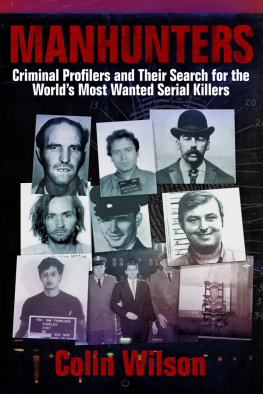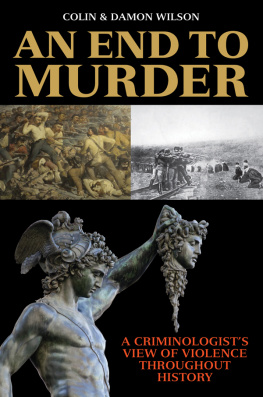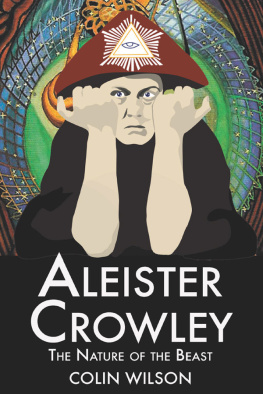Colin Wilson - World Famous Unsolved
Here you can read online Colin Wilson - World Famous Unsolved full text of the book (entire story) in english for free. Download pdf and epub, get meaning, cover and reviews about this ebook. year: 1996, publisher: Parragon Plus, genre: Detective and thriller. Description of the work, (preface) as well as reviews are available. Best literature library LitArk.com created for fans of good reading and offers a wide selection of genres:
Romance novel
Science fiction
Adventure
Detective
Science
History
Home and family
Prose
Art
Politics
Computer
Non-fiction
Religion
Business
Children
Humor
Choose a favorite category and find really read worthwhile books. Enjoy immersion in the world of imagination, feel the emotions of the characters or learn something new for yourself, make an fascinating discovery.

- Book:World Famous Unsolved
- Author:
- Publisher:Parragon Plus
- Genre:
- Year:1996
- Rating:5 / 5
- Favourites:Add to favourites
- Your mark:
- 100
- 1
- 2
- 3
- 4
- 5
World Famous Unsolved: summary, description and annotation
We offer to read an annotation, description, summary or preface (depends on what the author of the book "World Famous Unsolved" wrote himself). If you haven't found the necessary information about the book — write in the comments, we will try to find it.
World Famous Unsolved — read online for free the complete book (whole text) full work
Below is the text of the book, divided by pages. System saving the place of the last page read, allows you to conveniently read the book "World Famous Unsolved" online for free, without having to search again every time where you left off. Put a bookmark, and you can go to the page where you finished reading at any time.
Font size:
Interval:
Bookmark:
Chapter Three
In a book called Murder By Persons Unknown , by the crime writer H.L. Adam (1931) there is a chapter called 'Who killed Georgina Moore?'. The story he has to tell is this.
After lunch on 20 December, 1881, a little girl named Georgina Anne Moore, aged seven and a half, went back to her school in Pimlico, and vanished. She was due home at about four o'clock When she had failed to return by four thirty, her mother, Mrs Mary Moore, went out in search of her. Unable to find her, she sent a message to her husband Stephen, at the building site where he was working, telling him what had happened. Stephen Moore and several friends spent most of the evening and the rest of the night searching for Georgina, but there did not seem to be the slightest trace of her.
The next morning, Mary Moore was told by a little boy that he'd seen Georgina talking to a tall woman wearing a light Ulster sometime after lunch the previous day. That sounded like their former landlady, Mrs Esther Pay, who wore this type of coat (an Ulster is a long overcoat made of frieze, a coarse woollen cloth.)
In fact, Mary Moore had no reason to like Esther Pay. Esther's husband William had given the Moores notice when he discovered that Stephen Moore was having an affair with Esther. They had moved a short distance away, to Winchester Street. And Stephen had carried on his affair with Esther, sneaking in to her bed in the early hours of the morning after her husbandwhose job involved leaving the house very earlyhad gone to work. That summer, William Pay had found out that the affair was continuing, and he lost his temper with his wife and beat her up. After that, Stephen Moore had broken off the affair, telling Esther that it was for her own good. In fact, he had simply turned his amorous attentions elsewhere.
This is why Mary Moore went along to 51 Westmoreland Street to enquire whether Esther Pay had seen her daughter. Esther Pay evidently bore more of a grudge than Mary Moore didshe said coldly that she hadn't seen Georgie, and slammed the door.
The policeman who was placed in charge of the case, Inspector Henry Marshall of Scotland Yard, called on Esther on 5 January, 1882, two weeks after the child's disappearance. Again she denied all knowledge of it. When she asked him why he had come to see her, he told her. 'Because there are rumours that you've taken the child away.' Esther insisted that she had an alibishe had spent that afternoon with her sister-in-law, Carrie Rutter.
On 30 January, 1882, a barge was travelling along the river Medway at Yalding, Kent, when the bargee, Alfred Pinhom found his hook was caught in something at the bottom of the river. He pulled, and a child's body bobbed to the surface.
Lifted onto the tow-path, the body was seen to be tied with wire, with the legs fixed under the chin. It had been held down in the river by a large fire brick. It was covered in clay, and greatly decomposed.
Inspector Marshall was informed, and hurried down to Yalding. He had no doubt that he had found the body of Georgie Mooreparticularly when he learned that a child's white straw hat, trimmed with black velvetof the kind Georgie was wearing when she vanishedhad been found hanging on a bough over the river two weeks earlier. The inspector looked startled when he learned the name of the man who had found it; it was James Humphreys, and Esther Pay's unmarried name was Humphreys. James Humphreys was her uncle, and only two fields away, in the village of Nettlestead, Esther's parents lived in a cottage. In fact, Esther was there, staying with them, at the time the body was discovered.
This looked too much like coincidence.
Early the next morning, Stephen Moore arrived in Yalding and identified his daughter. Inspector Marshall then went to call on Esther Pay. She seemed indignant at the intrusion.
'How did you know I was here?'
Have you not heard that yesterday a child was found in the Medway, at the back of your house?'
'No.'
'I must detain you,' said Marshall, 'on a charge of stealing the child. You may be charged with her death.'
Esther Pay's reply was: 'You must prove it.'
The police searched the house, and in a small handbag, they found a letter written by Esther to Stephen Moore: She called him 'darling', and asked him to write to her. 'If you hear any tidings,' said the letter, 'let me know at once. Poor little darling! I hope you will find her.'
Esther was taken to the local station, where she was left in charge of a police sergeant. To him she remarked: 'It's very strange to me if Moore doesn't know something about it. He's so artful. You'd better look after him, for I shouldn't be surprised if he's not missing very shortly; I know he's not on very good terms with his wife, and now he's got rid of Georgie you'd better look very sharp after him, for once he gets away you'll never catch him.'
She expressed the same kind of suspicion to Inspector Marshall when he came back. Stephen Moore was standing outside on the station platform, and Marshall had refused to let her speak to him. 'Don't be surprised if he bolts,' said Esther, 'and then you'll find the most guilty party is gone.'
But later on the train, she seemed to contradict this statement, saying that she thought Georgina had been murdered to spite Stephen Moore. 'He has served women very badly, some that I know worse than me, and he has served me bad enough. Why don't you discover them , then you might get on the right track.'
In fact, Stephen Moore, a rather good-looking young man with a neatly trimmed handlebar moustache, was something of a Casanova. He had married his wife eight years earlier, after she had given birth to a son. They moved to Bath, where Georgina was born, and Moore began an affair with a lady called Emma Irwin, a widow who kept a grocer's shop, claiming that he was unmarried. She bore him a son, but the child lived for only three days. His wife seems to have found out about this, and went back to her parents, taking the two children with her. Moore moved to London, but continued his affair with Emma Irwin, but when he met her sister, Alice Day, decided that he would like to add her to his collection of mistresses. Like her sister, she succumbed. Not long after this, Mary Moore and the children came to rejoin him in London, and they took rooms at 51 Westmoreland Street, Pimlico. In 1879, Alice Day arrived declaring that she was pregnant. Moore denied all responsibility, and sent her away, never to see her again. When Emma Irwin learned what had happened, she also broke off with Stephen Moore.
But by now, Stephen Moore already had his eye on another potential mistressEsther Pay. His landlord and landlady the Rutters, had moved out of 51 Westmoreland Street, and Carrie Rutter's brother, William Pay, had moved in with his wife Esther. Esther was a tall, dark-haired woman of thirty-five, with a prominent nose and receding chin. Her firm mouth suggested a certain determination of character.
After William Pay had blacked his wife's eye, and Stephen Moore had decided that the affair was more trouble than it was worth, he broke with Esther 'for her own good' and promptly began affairs with two other women, a servant girl called Miss Carroll, and a Mrs Maidment, who lived near Regent's Park.
Three days after Georgina's disappearance, Esther called at the building company where Stephen Moore was working. He had now shaved off his moustache and whiskers, and Esther was apparently pleasantly impressed by his appearance. She told him she had come to talk to him about the missing child.
A few days before Georgina's body was discovered, they met again in Sloane Square, walked across Hyde Park, and stopped at a pub. He then went back to her lodgingsshe had left her husbandand it seems that some kind of reconciliation took place. (This can be assumed from the affectionate tone of her letter to him.) She told him that she intended to go down to see her parents at Yalding the next day. We can also assume that the two had become lovers again from the fact that Moore met her again the next day at Charing Cross Station, and they walked down the Strand and had a glass of wine together after which he bought her some flowers and took her to the station.
Next pageFont size:
Interval:
Bookmark:
Similar books «World Famous Unsolved»
Look at similar books to World Famous Unsolved. We have selected literature similar in name and meaning in the hope of providing readers with more options to find new, interesting, not yet read works.
Discussion, reviews of the book World Famous Unsolved and just readers' own opinions. Leave your comments, write what you think about the work, its meaning or the main characters. Specify what exactly you liked and what you didn't like, and why you think so.
















